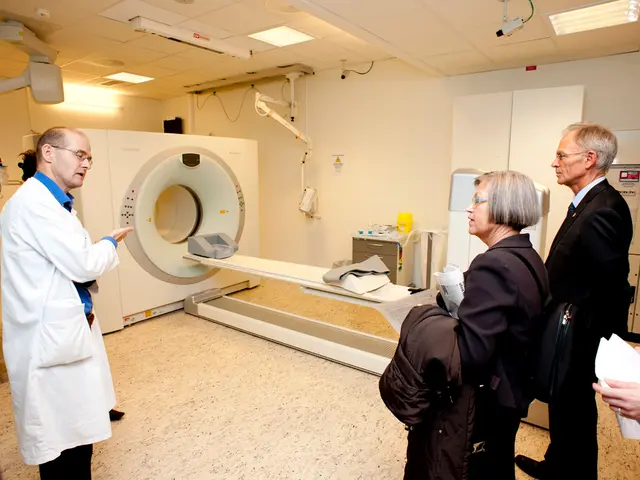Brain Inflammation Targeted by Novel Alzheimer's Disease Molecule
In a groundbreaking development, a team of researchers has identified a potential new treatment for Alzheimer's disease that focuses on reducing brain inflammation. The team screened over 58,000 chemical compounds and identified six candidate compounds, with A11 being the most effective. However, it's important to clarify that as of mid-2025, no evidence exists that an "A11 molecule" is a current or emerging therapeutic candidate for Alzheimer's disease to inhibit brain inflammation or enhance cognition.
The study, led by Dr. J. Wes Ulm, a physician-researcher, demonstrates that targeting PU.1 could be a viable approach to treat neuroinflammatory diseases, including Alzheimer's disease. PU.1 becomes excessively active in promoting inflammation through gene expression in the brain's microglia immune cells in the context of Alzheimer's disease.
A11 has been shown to reduce brain inflammation in cell models mimicking human brain immune cells, derived from patient-stem cells, and significantly reduced cellular inflammation and stress markers. In mouse models with Alzheimer's-like symptoms, A11 showed reduced neuroinflammation, neuronal death, and positive changes in memory-related brain regions.
Mice treated with A11 significantly outperformed the control group in maze-based memory tests, suggesting enhanced learning and memory skills. This could potentially open up the possibility of treatment through a new class of therapeutic candidates that could enhance quality of life and reduce the early onset and severity of dementia and related disease classes.
A11 targets a gene transcription factor named PU.1 to inhibit its ability to promote inflammation in the brain. By doing so, A11 curtails this problematic activity of PU.1 by enlisting other proteins to suppress the inflammatory genes that PU.1 is involved in activating. This novel role of A11 offers a new approach for controlling neuroinflammation in Alzheimer's.
Dr. Ulm noted that neuroinflammation is associated with an earlier and more pronounced disease presentation in dementia. Several cellular pathways, including one involving PU.1, have been correlated with a higher incidence and extent of neuroinflammation. Dementia causes significant emotional and physical burden on those affected, their families, and caregivers, and while there has been a slight decline in the rate of new dementia cases, Alzheimer's remains an expensive and complex medical condition with limited treatment options.
This study represents a potentially innovative treatment approach for Alzheimer's and other forms of dementia and neurological illness. If further research confirms the findings of this study, it might pave the way for a new era in Alzheimer's treatment and management.
- The newly identified treatment for Alzheimer's disease, focusing on reducing brain inflammation, is a promising development in the field of neurology.
- The study, spearheaded by Dr. J. Wes Ulm, suggests that targeting PU.1 could be an effective approach for treating neuroinflammatory diseases such as Alzheimer's and other dementias.
- The compound A11, which has shown potential in reducing brain inflammation, was identified among over 58,000 chemical compounds, with PU.1 being a key factor in its effectiveness.
- A11 has been shown to positively impact memory-related brain regions in mouse models with Alzheimer's-like symptoms, potentially reducing the early onset and severity of dementia.
- By inhibiting the activity of PU.1, A11 offers a novel approach for controlling neuroinflammation in Alzheimer's disease and other neurological disorders.
- The study's findings emphasize the need for further research into therapies and treatments for Alzheimer's disease and dementia, particularly those addressing the phenomenon of neuroinflammation, to improve overall health and wellness.




